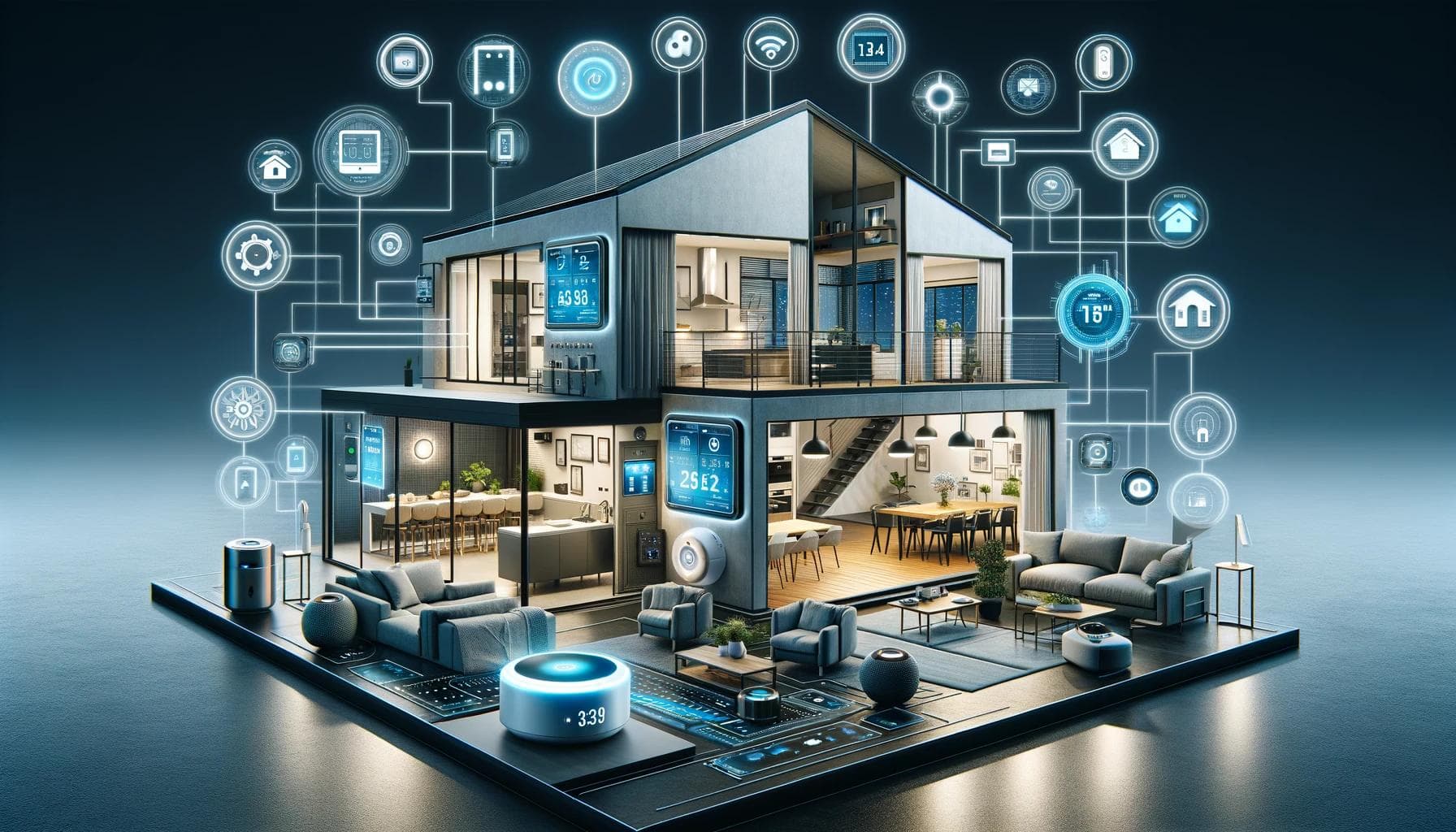The Ultimate Guide to Advanced Home Automation with Smart Technology
Home automation, often referred to as "smart home technology," involves integrating smart devices and systems to automate and control various household functions—such as lighting, heating, security, and appliances—remotely or on a scheduled basis. Advanced home automation goes beyond basic automation, using AI (Artificial Intelligence), machine learning, and IoT (Internet of Things) to create a responsive, interconnected ecosystem in your home.
This technology has emerged in response to the growing demand for convenience, efficiency, and energy conservation. Smart homes are not only more intuitive but also capable of adapting to user behaviors, saving time and reducing manual effort.

Why Advanced Home Automation Matters Today
Smart home technology has become increasingly relevant due to several factors:
-
Energy Efficiency: Smart thermostats, lighting, and appliances optimize usage, significantly lowering electricity consumption.
-
Security Enhancement: Advanced surveillance systems and smart locks provide real-time alerts and remote access control, boosting home safety.
-
Aging-in-Place Support: Elderly or differently-abled individuals benefit from voice-activated systems and automated care tools.
-
Remote Control and Monitoring: With mobile apps, users can control their entire home while away.
-
Integration and Personalization: Smart homes now use AI to understand routines and adapt environments accordingly—adjusting lighting, temperature, or even music based on preferences.
These developments touch various user groups: busy professionals, families, the elderly, and eco-conscious homeowners.
Recent Trends and Developments (2024–2025)
The smart home landscape has seen several changes and innovations over the past year:
| Trend | Description |
|---|---|
| AI-Powered Home Assistants | Devices like Google Nest and Amazon Alexa now use generative AI to learn habits and automate routines. |
| Matter Protocol Adoption (2024) | A new universal standard, Matter, was widely adopted in 2024 to ensure compatibility among devices. |
| Smart Energy Grids Integration | More homes are integrating with local grids to sell back solar power or adjust usage during peak times. |
| Privacy-Focused Devices (2025) | Companies have started offering smart devices that process data locally, reducing cloud dependency. |
| Health and Wellness Automation | Air quality monitors, circadian lighting, and smart beds have gained popularity for health-conscious users. |
Regulations, Laws, and Policies
Depending on your country or region, home automation may be influenced by data protection laws, building codes, or energy policies.
In the United States:
-
The Federal Trade Commission (FTC) monitors consumer protection, especially regarding data privacy of smart devices.
-
Energy Star certification helps users identify efficient smart products.
-
Some states offer tax credits or rebates for installing energy-efficient smart thermostats or solar-integrated systems.
In the European Union:
-
General Data Protection Regulation (GDPR) requires companies to handle personal data with strict consent and security protocols.
-
The Energy Performance of Buildings Directive (EPBD) encourages automation in energy management for buildings.
In India:
-
Smart city initiatives have led to increased integration of home automation.
-
The Bureau of Energy Efficiency (BEE) promotes smart systems for household energy savings.
-
Privacy rules under the Digital Personal Data Protection Act, 2023 now apply to smart devices collecting personal data.
These policies ensure that while innovation continues, it does so with accountability and user protection in mind.
Helpful Tools, Apps, and Platforms
Below are popular and reliable tools for building or managing smart homes:
| Tool / Service | Functionality |
|---|---|
| Home Assistant (Open-source) | Local-based home automation platform that supports thousands of devices |
| Google Home / Amazon Alexa | Central apps for managing smart devices via voice or routines |
| IFTTT (If This Then That) | Creates custom automations between various devices and services |
| Samsung SmartThings | Supports multi-brand device integration with cloud-based control |
| Apple HomeKit | Privacy-focused smart home ecosystem for iOS users |
Frequently Asked Questions
Q1: Can smart home devices work offline or without the internet?
A: Some devices, especially those using local hubs like Home Assistant or Zigbee, can function offline. However, many rely on cloud services for advanced features or voice control.
Q2: Is advanced home automation safe from hacking or cyber threats?
A: While no system is entirely immune, using strong passwords, two-factor authentication, and keeping firmware updated significantly reduces risks. Choosing devices with local data processing can also enhance privacy.
Q3: How much does it cost to set up an advanced smart home?
A: Basic setups may start under $300, while fully automated systems with AI and security features can range from $1,000 to $10,000+, depending on the size of the home and the number of devices installed.
Q4: Can smart homes help reduce electricity bills?
A: Yes. Smart thermostats, lighting, and appliances can significantly cut down on energy usage by optimizing performance and turning off during idle times. Energy reports also help users make informed decisions.
Q5: Are smart home devices difficult to install and maintain?
A: Many smart devices are plug-and-play and can be managed via apps. However, advanced setups involving sensors, routines, and cross-platform integration may require professional help or dedicated configuration.
Conclusion
Advanced home automation is reshaping the way we interact with our living spaces. As technology becomes more intuitive and interconnected, smart homes are evolving from luxury features to practical necessities—supporting efficiency, security, and comfort.
With new protocols like Matter, energy-saving opportunities, and increasing privacy controls, the smart home ecosystem is becoming more accessible to everyone. Whether you're just beginning or looking to upgrade, understanding the landscape of advanced home automation empowers you to make informed decisions for a smarter, safer future.